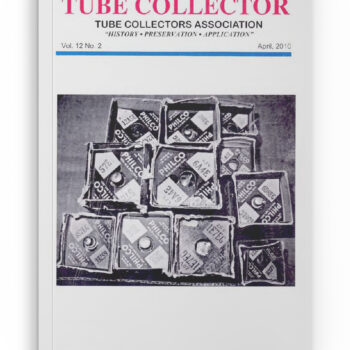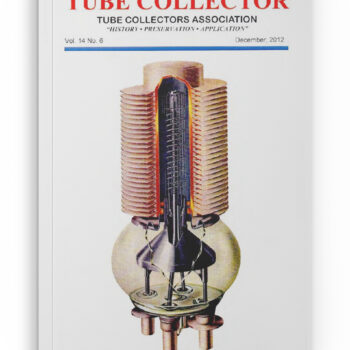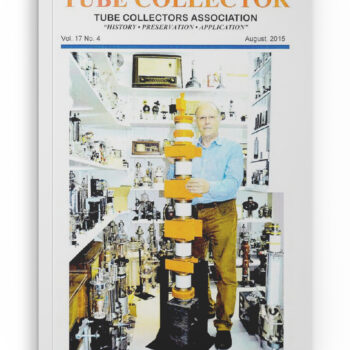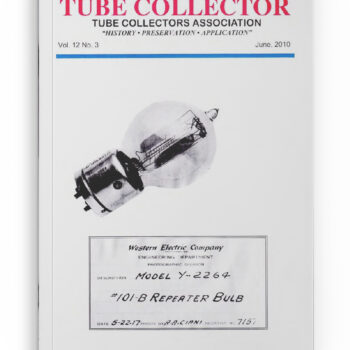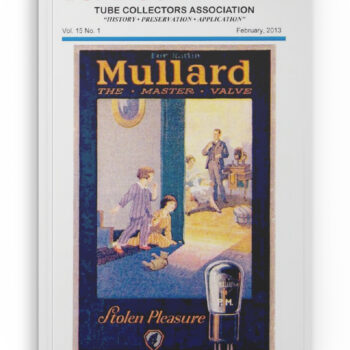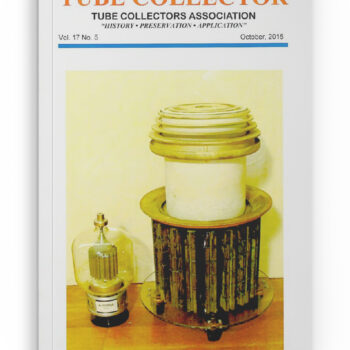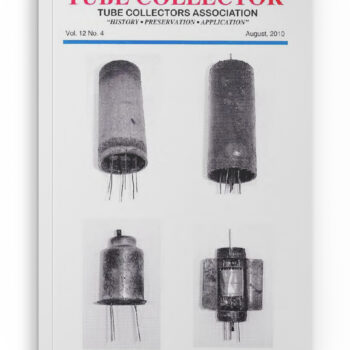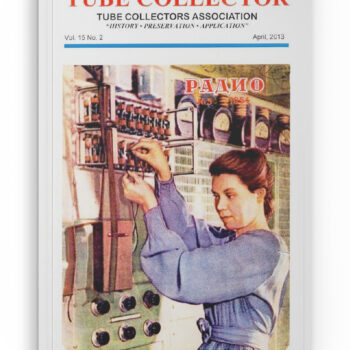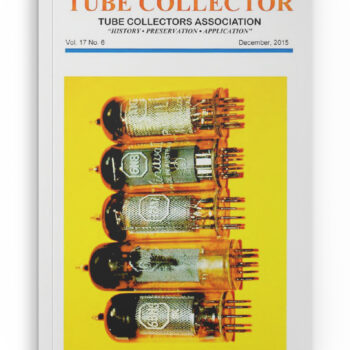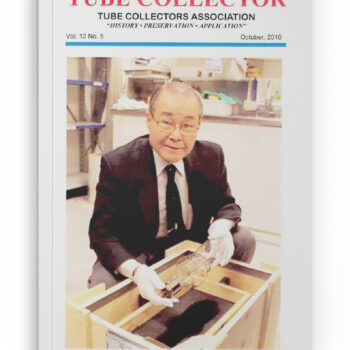A stach of rare Philco-branded “export” tubes as recently found in Canada. See the story on page 2. In this issue
Category: Magazines
Vol. 14, No. 6
The Philips TBL6-4000 air-colled triode for industrial RF heaters, rated for continuous dissipation of 1.3 kW. Its “EIA identity is 7753, as registered by Amperex in 1960. From J. Haanjes and H. Carter, Classificatio of Electron Tubes, 2nd edition (New York, Macmillan, 1962), courtesy Bro. Patrick Dowd. In this issue
Vol. 17, No. 4
Udo Radtke, “power-collector,” with his YK-1001 klystron (for UHF television, 10 kilowatts) in an elegantly welded-up display stand. For a fine cutaway image of this 180- pound tube, complete with its resonant cavities, see www.tubecollection.de/ura/YK-1001.htm. “He who dies with the biggest tube wins.” Photo: Udo Radtke. In this issue
Vol. 12, No. 3
A fine old WECo (pre Bell Labs) shot of a “tennis-ball” repeater tube. Source: Jerry Vanicek. In this issue
Vol. 15, No. 1
Even the family cat likes Philips-Mullard tubes! Brochure from Sibley Collection. In this issue
Vol. 17, No. 5
An Eimac 8351/4CV100,000 vapor-cooled tetrode, of the type used in one of the Collins 250-kW transmitters, now removed, at the Voice of America transmitting site outside Delano, California. It is accompanied by its much smaller vcousin, a mere 4-1000. In this issue
Vol. 12, No. 4
Part of a fine collection of developmental metal tubes. See inside for more details Photos: Bob Millard. In this issue
Vol. 15, No. 2
Soviet-era transmitter technician tests at the fuse panel. From Radio magazine, March 1954 In this issue
Vol. 17, No. 6
A family of Philips Innoval tubes – left to right, 6BH5, 6M5, 12AN7, 6N8, and 6AN7. Photo: Daniel Stocks. In this issue
Vol. 12, No. 5
Hisashi Ohtsuka inspecting an LRS Realy at the Technical Museum in Stockholm. The tube, and a Telefunken amplifier that uses it, are being loaned to the museum of the University of Electro-Communication in Tokyo. This greatly enhances the excellent tube collection that Ohtsuka donated, and that he continued to support. (See TCA, April 2005, p....

